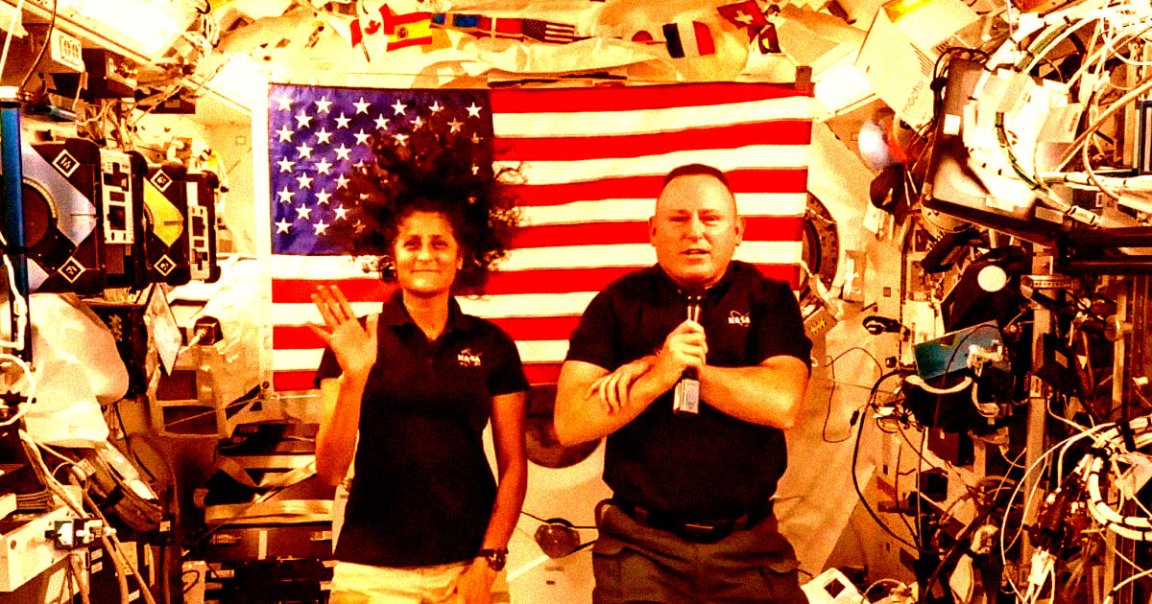
NASA admitted during a live conference today that it still isn’t confident enough in Boeing’s Starliner to safely return its two stranded astronauts, Butch Wilmore and Suni Williams, from the International Space Station.
The pair have been stuck on the orbital outpost since early June, but ongoing technical issues plaguing Starliner have pushed back their return date indefinitely.
And even with NASA’s contingency plan of having the pair be sent back on board a SpaceX Crew Dragon spacecraft in place, their stay could be massively extended.
According to the head of NASA’s commercial crew program Steve Stich, if the pair were to secure two seats on the upcoming SpaceX Crew-9 mission, they’d have to wait until February 2025 to make it back.
In other words, their trip to the ISS may have just been extended from just two weeks to just shy of eight months — an unexpected and considerable delay caused by Boeing’s technical difficulties.
NASA also confirmed rumors that the agency was considering freeing up two out of four seats on an upcoming SpaceX mission to the ISS to make space for Williams and Wilmore’s return. The mission was initially slated for August 18, but has since been pushed back to September 24 to buy the agency more time to figure out what to do.
In short, the agency is still keeping all of its options open.
“We have been working with SpaceX to ensure that they’re ready to respond on Crew-9 for a contingency of returning Butch and Suni on Crew-9 if we need that,” Stich said during today’s conference call. “We have set up the Dragon for Crew-9 to have flexibility to have only two passengers fly up on that flight and then we could return four crew members in the February 2025 time frame.”
Meanwhile, Williams and Wilmore would “remain on station and become part of that increment.”
Stich, however, reiterated that NASA has yet to “approve this plan,” despite having done “all the work to make sure this plan is there.”
“We have the suits identified to fly up on Crew-9, we have the seats set up so that we can fly a multiple compliment of people, but we have not turned that on formally as the path that we’re going to go down.”
NASA has also been discussing other contingency plans, including flying a total of five crew members on a return journey, including one seat that would need to be mounted to a Dragon capsule’s cargo pallet.
Another even more ambitious plan would be to “allow up to three crew members on the cargo pallet” in SpaceX’s Crew-8 spacecraft, which is currently docked at the space station, bringing the total number of seats to seven.
Last month, NASA awarded SpaceX a $266,000 task order for a “special study for emergency response” to examine whether it’s possible to load more than four crew members into Crew Dragon. According to the agency, the task order was inspired by leaks affecting the Russian Soyuz MS-22 capsule last year, and wasn’t related to the ongoing Starliner crisis.
The increased seat number would theoretically give Williams and Wilmore room to return at a much earlier date — but Stich revealed that it’s very unlikely for the agency to resort to this plan, given the option of returning them on Crew-9.
Meanwhile, returning the empty Starliner spacecraft will require changing “software parameters,” per Stich, to allow it to undock and reenter the Earth’s atmosphere autonomously. According to previous reporting by Ars Technica, such a task would be “non-trivial” and a “significant” undertaking that could take up to four weeks.
When asked if the two stranded astronauts were “excited” about spending many more months on the station, NASA’s ISS program manager Dana Weigel said that the pair were “aware” that NASA is “always looking at contingency plans.”
“I mean this is a pretty common thing that we do, we’ve always got backup plans of course,” Weigel said, adding that the two were “included in all of the discussions.”
“They’re great crew members, great astronauts, great at flying Starliner,” she said. “So I’d say they’re prepared for either path that we go down.”
More on Starliner: NASA Pushes Back Next SpaceX Astronaut Launch as Boeing Crisis Deepens